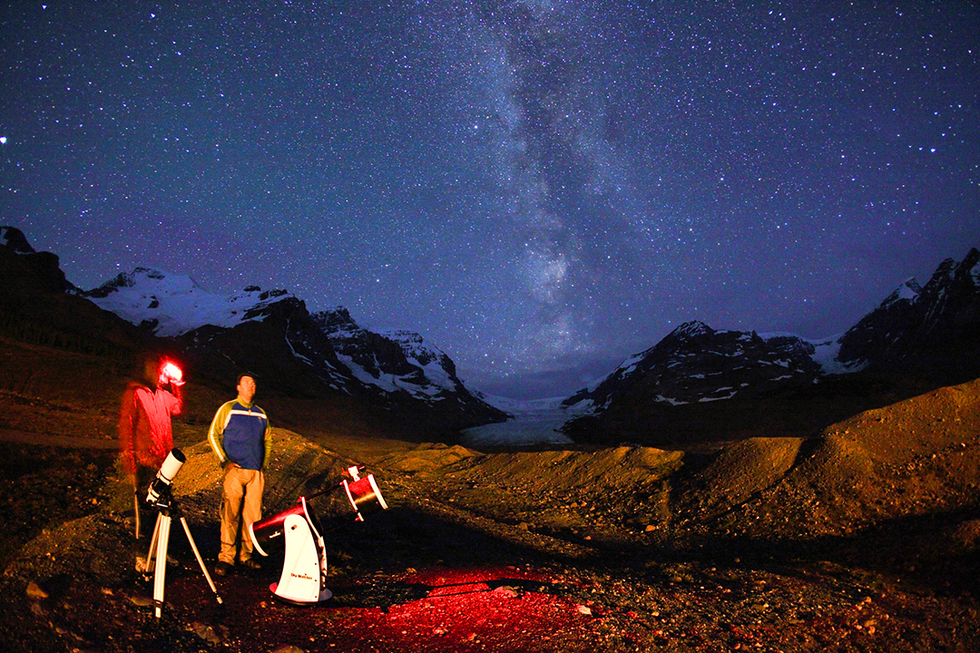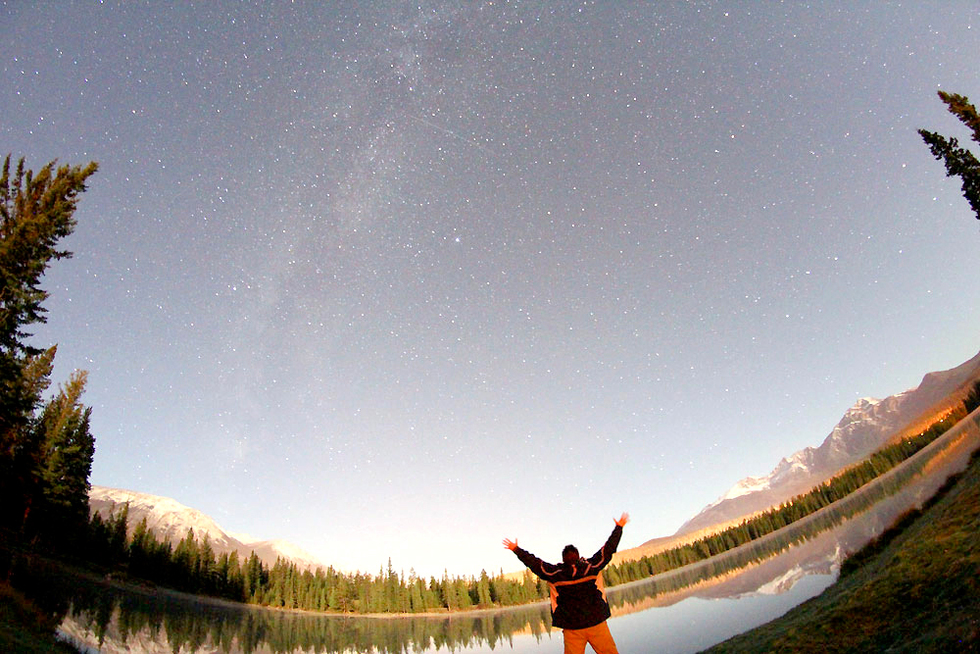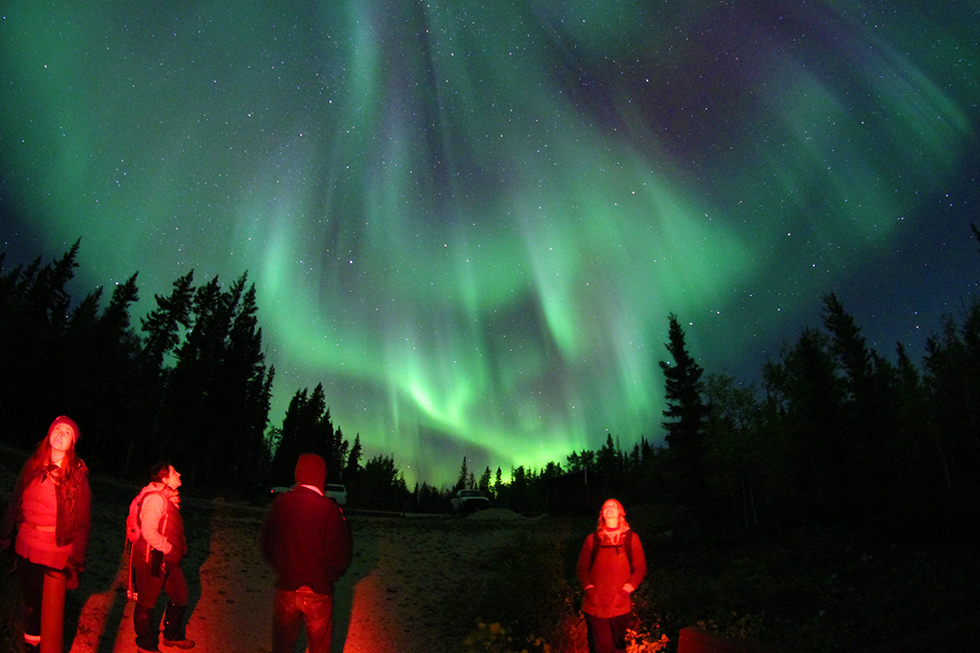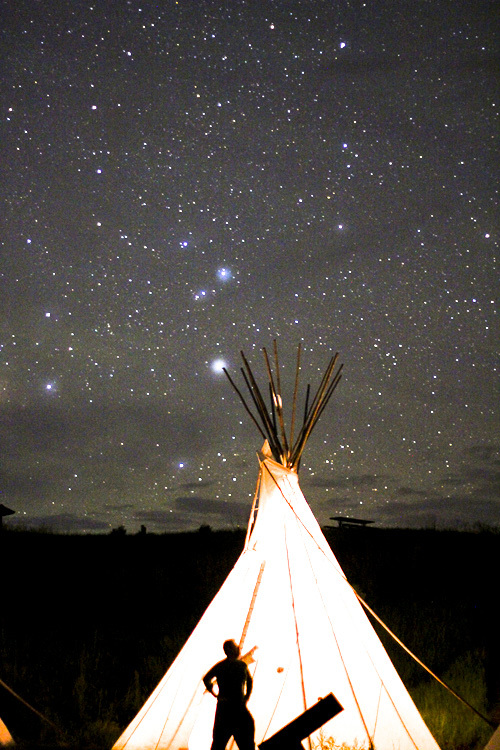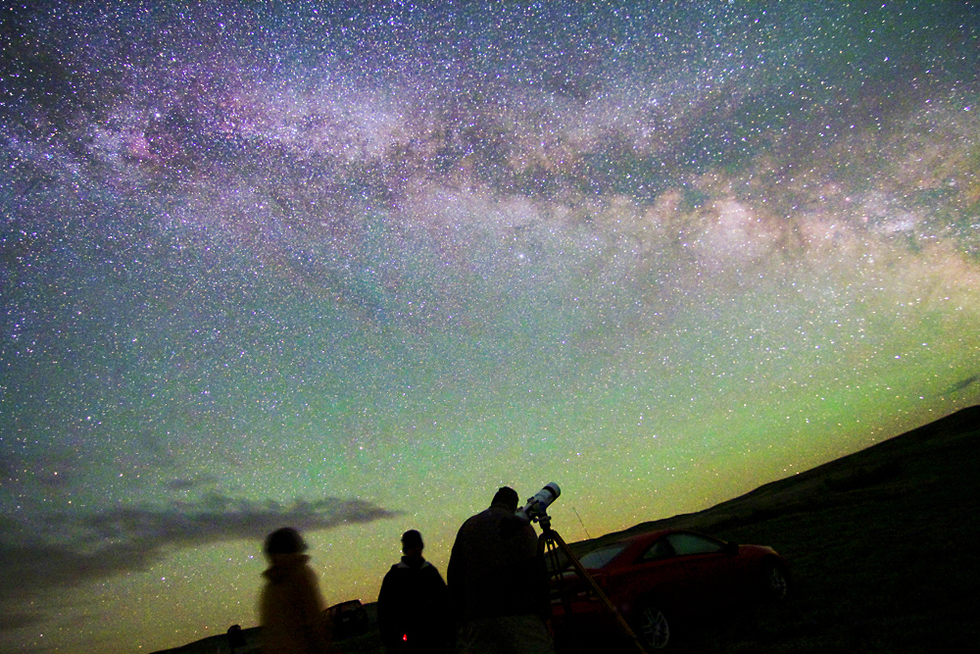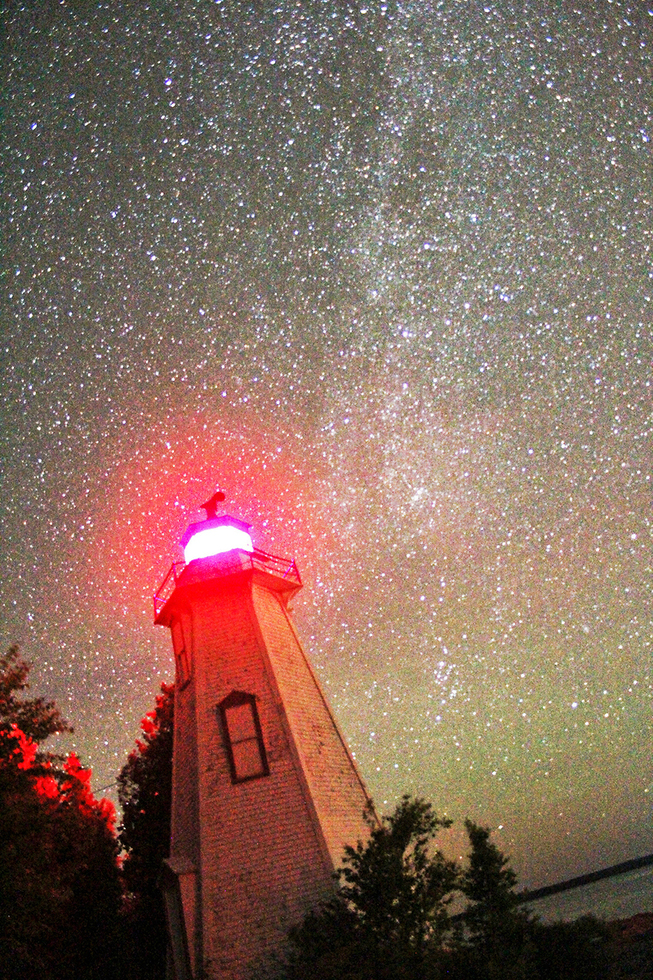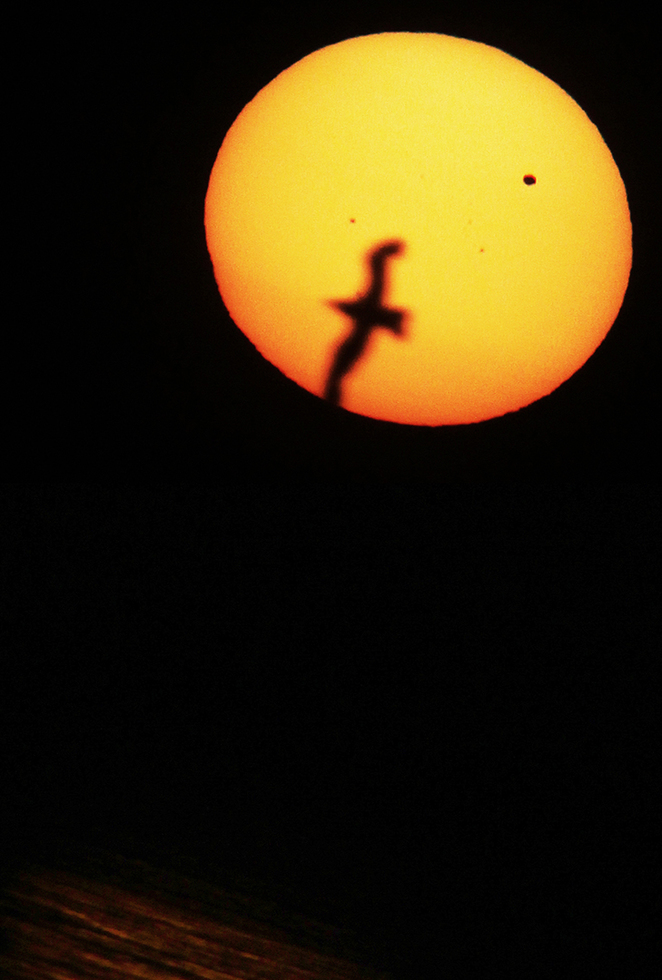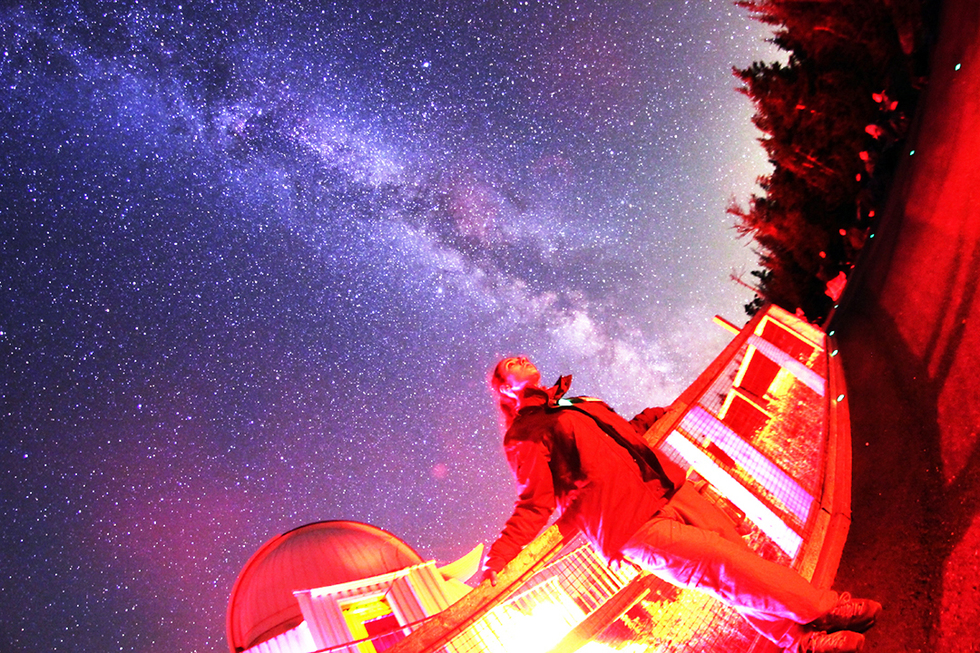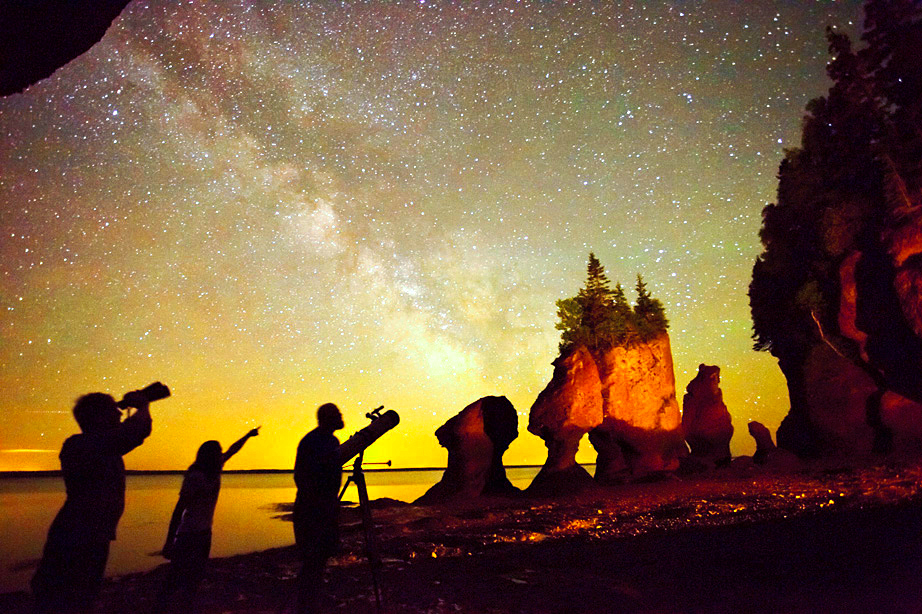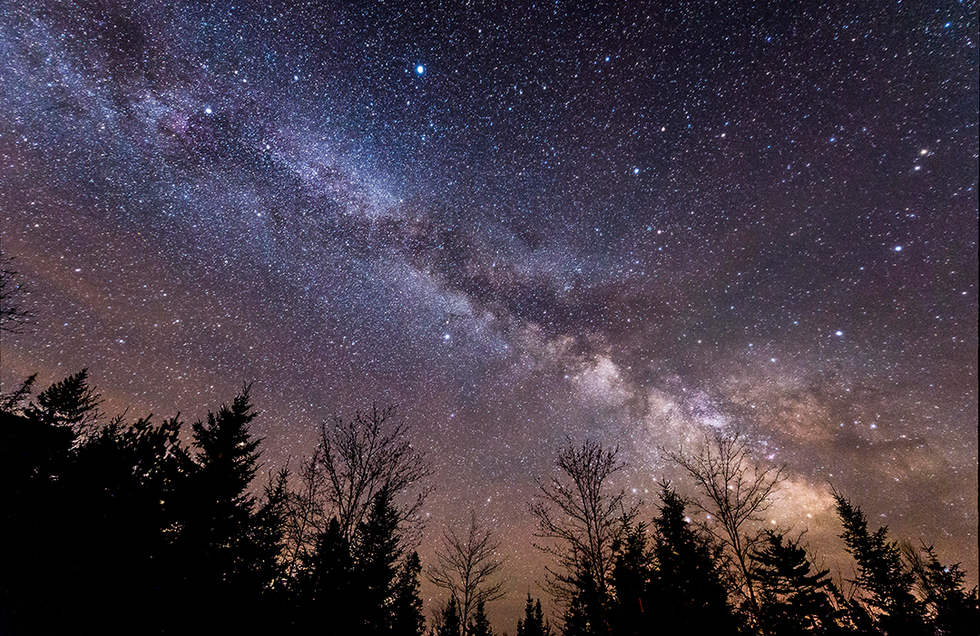Yuichi Takasaka / blue-moon.ca
10 Incredible Canadian ‘Stargazing Parks’
By Frommer's Staff
With more than half Earth’s dark sky preserves (19 out of 36), Canada is the world leader in protecting the night against human-made light pollution. Here’s a look at the 10 most incredible stargazing experiences north of the 49th parallel.
Peter McMahon/ WildernessAstronomy.com
Jasper National Park, Alberta
Sometimes referred to as ‘the Walt Disney World of dark sky preserves’, Jasper is the second-largest astronomy park on Earth and the one with the most accessible iconic observing locations, from mountain tops to canyons to hot springs and glaciers.
Guest speakers ranging from astronauts such as Commander Chris Hadfield to Discovery Channel hosts regale visitors under the stars at the annual Jasper Dark Sky Festival (every October). Amenities range from rustic camping to five-star hotels, many of which offer astronomy-themed packages.
Guest speakers ranging from astronauts such as Commander Chris Hadfield to Discovery Channel hosts regale visitors under the stars at the annual Jasper Dark Sky Festival (every October). Amenities range from rustic camping to five-star hotels, many of which offer astronomy-themed packages.
Peter McMahon/ WildernessAstronomy.com
Wood Buffalo National Park, Northwest Territories & Alberta
The hidden gem of the NWT aurora-tourism scene, "Wood Buff" (as it’s locally known) is the world’s largest astronomy park—bigger than Switzerland and wider, at its longest, than one of the major moons of Saturn.
Flights depart daily from Edmonton to Fort Smith, a friendly town of 2,500 on the edge of the park, where you can see every glorious detail of these curtains of light sent from the Sun to tickle our upper atmosphere.
Flights depart daily from Edmonton to Fort Smith, a friendly town of 2,500 on the edge of the park, where you can see every glorious detail of these curtains of light sent from the Sun to tickle our upper atmosphere.
Alan Dyer/ amazingsky.net © 2012
Cypress Hills Interprovincial Park, Saskatchewan & Alberta
By day, staff on the Saskatchewan side of this interprovincial park give sunbathers at the beach a view of our local star through specially filtered telescopes. At night, visitors get close-up views of planets, galaxies, and more through a computerized telescope in an observatory near the park’s main observing site.
Each August, the park plays host to the popular Saskatchewan Summer Star Party—one of the biggest in Western Canada.
Each August, the park plays host to the popular Saskatchewan Summer Star Party—one of the biggest in Western Canada.
Peter McMahon/ WildernessAstronomy.com
Grasslands National Park—West Block, Saskatchewan
A few hours south of Regina, SK, the town of Val Marie (pop. 136…no, we didn’t forget a digit) near the park’s West Block offers several seasonal restaurants and accommodation options, including a former nunnery and an aboriginal tipi experience.
The Regina Centre of the Royal Astronomical Society of Canada puts on an annual ‘star party’ here and at the nearby East Block each summer.
The Regina Centre of the Royal Astronomical Society of Canada puts on an annual ‘star party’ here and at the nearby East Block each summer.
Peter McMahon/ WildernessAstronomy.com
Grasslands National Park—East Block, Saskatchewan
While the more civilized West Block of Grasslands is one of the darkest places in Canada, the park’s East Block, accessible by a 2-hour drive from the West Block, is arguably the darkest place in Canada and one of the darkest in North America.
Visitors to the East block are often rewarded with views of faint details in the Milky Way such as colorful star-forming nebulas (seen as pink patches in this image) and a phenomenon known as airglow (diffuse green in this image) visible only from the darkest places on Earth.
Visitors to the East block are often rewarded with views of faint details in the Milky Way such as colorful star-forming nebulas (seen as pink patches in this image) and a phenomenon known as airglow (diffuse green in this image) visible only from the darkest places on Earth.
Peter McMahon/ WildernessAstronomy.com
Bruce Peninsula National Park, Ontario
Visitors to the shipwreck capital of Canada can view the starry skies above the sunken freighters and watchful lighthouses of Ontario’s Lake Huron. Known for beautiful sunsets, "The Bruce" is a naturalist’s paradise with several serious amateur astronomers having built large private observatories here.
In the summer months, ecologists host public astronomy nights at an observing pad with permanently-affixed mounts for telescopes, as well as image-stabilized binocular tours of the heavens on select night crossings of the local ferry.
In the summer months, ecologists host public astronomy nights at an observing pad with permanently-affixed mounts for telescopes, as well as image-stabilized binocular tours of the heavens on select night crossings of the local ferry.
Peter McMahon/ WildernessAstronomy.com
Point Pelee National Park, Ontario
One of the great North American birding Meccas, this Southern Ontario sanctuary is also Canada’s balmiest dark sky park. Point Pelee is so far south, in fact, that it’s possibly the only place in Canada (and parts of the U.S.) where you can see some of the Southern Hemisphere constellations and deep space objects.
The clear horizon across Lake Erie on days where the air and water temperature are the same make Point Pelee a gem for viewing these and other near-horizon events, such as the 2012 transit of Venus across the Sun (pictured here.)
The clear horizon across Lake Erie on days where the air and water temperature are the same make Point Pelee a gem for viewing these and other near-horizon events, such as the 2012 transit of Venus across the Sun (pictured here.)
Peter McMahon/ WildernessAstronomy.com
Mont Mégantic International Dark Sky Reserve, Quebec
“Oui!!! Le mieux!!”: You haven’t gone stargazing with a large group of people until you’ve done it during a big-ticket astronomy event in ‘La belle province.’
Visitors to the Tuscany-like Eastern Townships dark sky preserve of Mont Mégantic know how to celebrate an eclipse or meteor shower, cheering for each bright fireball like it’s a home-team goal at a Montreal Canadiens game. The park contains the largest tourism-driven observatory in Canada and the second-largest research observatory in the country. Tours of both facilities, A/V presentations, and exhibits at the science center at the base of the mountain are available in English as well as in “the language of love"—French.
Visitors to the Tuscany-like Eastern Townships dark sky preserve of Mont Mégantic know how to celebrate an eclipse or meteor shower, cheering for each bright fireball like it’s a home-team goal at a Montreal Canadiens game. The park contains the largest tourism-driven observatory in Canada and the second-largest research observatory in the country. Tours of both facilities, A/V presentations, and exhibits at the science center at the base of the mountain are available in English as well as in “the language of love"—French.
Kevin Snair/ CreativeImagery.ca
Hopewell Rocks/ Fundy National Park, New Brunswick
Take in the highest tides in the world (at low tide, preferably) under the famed arches and ‘flowerpots’ of the Bay Of Fundy’s Hopewell Rocks. To see the full process of tides in action, go during a full moon or during the first/last quarter moon—the dramatic movement of the water is incredible.
Kejimkujik National Park, Nova Scotia
The Maritimes are settled, but there are clear skies there… and some of the darkest skies are just a couple hours south of Halifax, along Nova Scotia’s Southern Shore.
Nature interpreters at Kejimkujik National Park host regular telescope stargazing sessions throughout the summer at a purpose-built aboriginal ‘Sky Circle.’ On the way to-or-from ‘Keji’, be sure to check out the fishing town and UNESCO World Heritage Site of Lunenburg, home to St John’s Anglican Church, which features a 250-year-old ‘planetarium’—a scientifically accurate starscape on its ceiling.
Nature interpreters at Kejimkujik National Park host regular telescope stargazing sessions throughout the summer at a purpose-built aboriginal ‘Sky Circle.’ On the way to-or-from ‘Keji’, be sure to check out the fishing town and UNESCO World Heritage Site of Lunenburg, home to St John’s Anglican Church, which features a 250-year-old ‘planetarium’—a scientifically accurate starscape on its ceiling.





